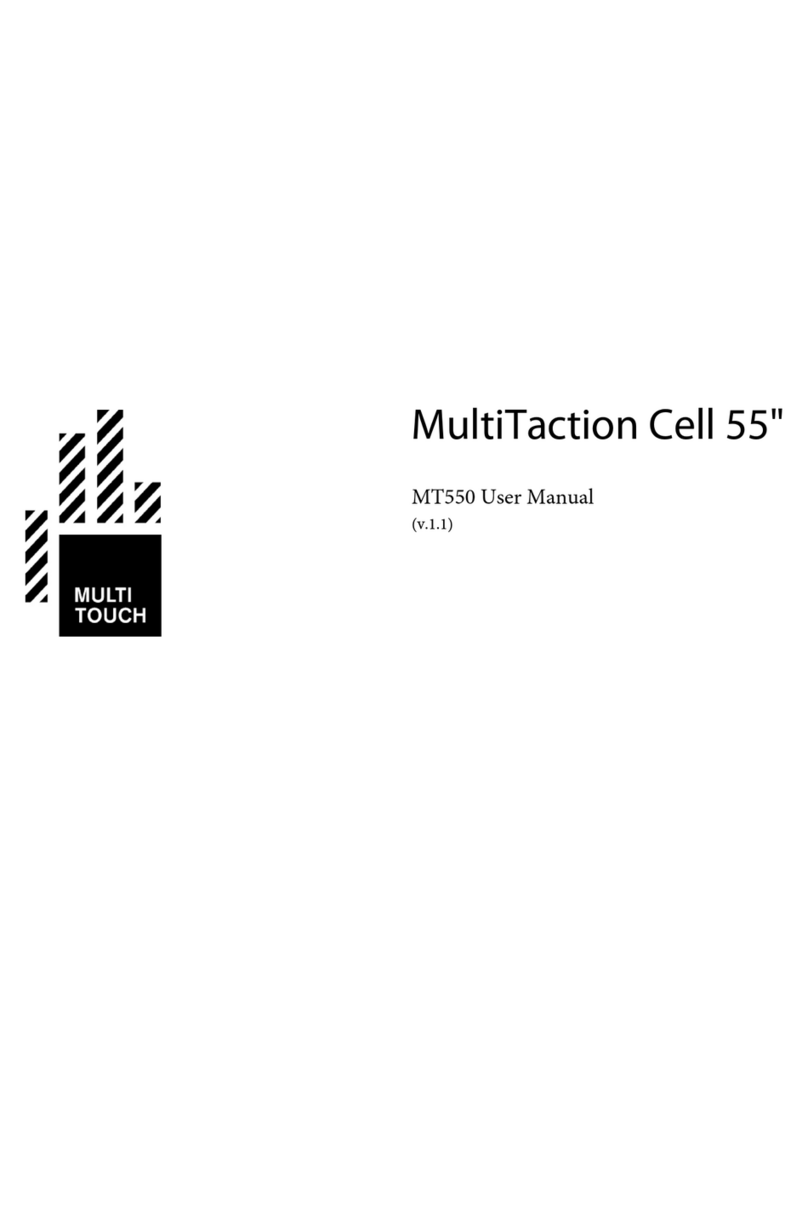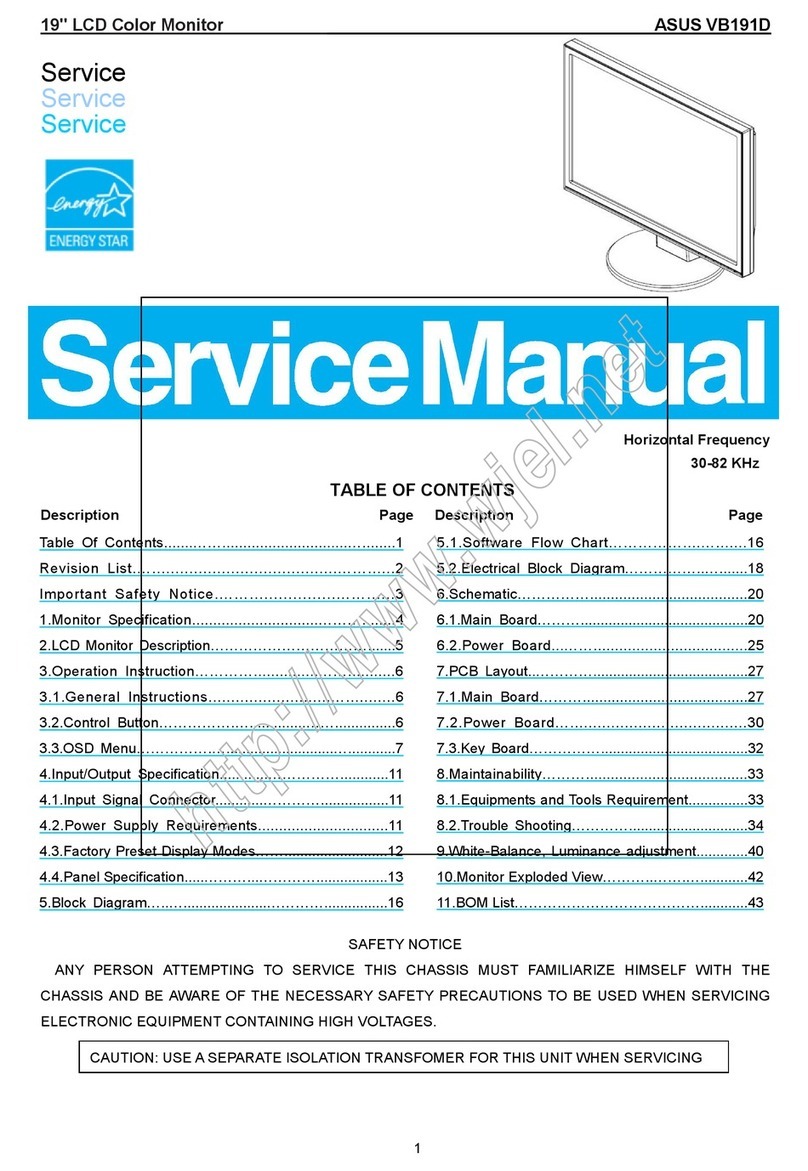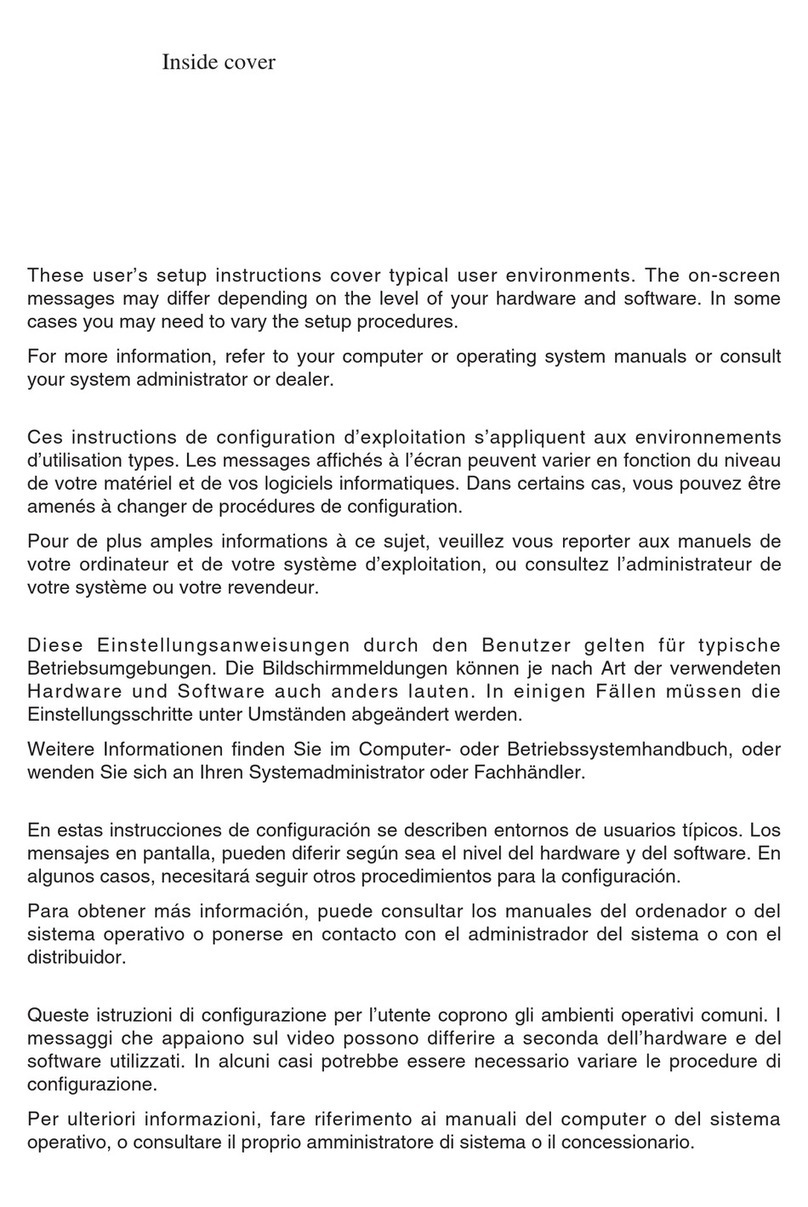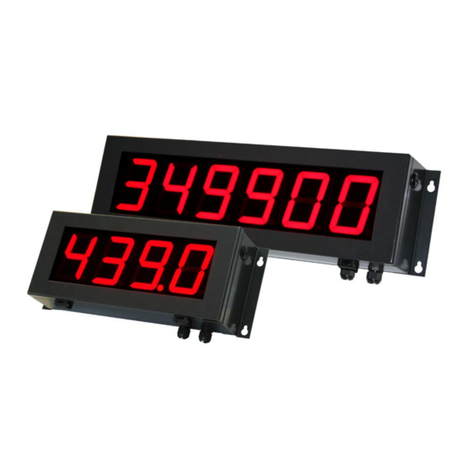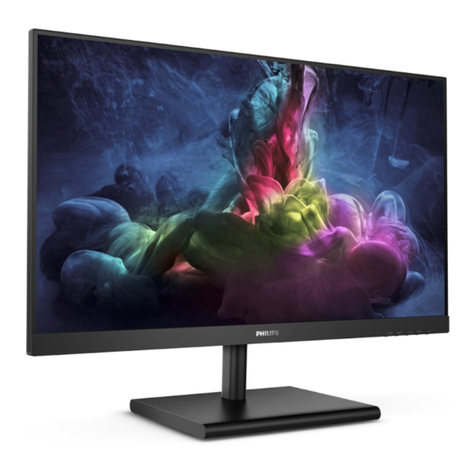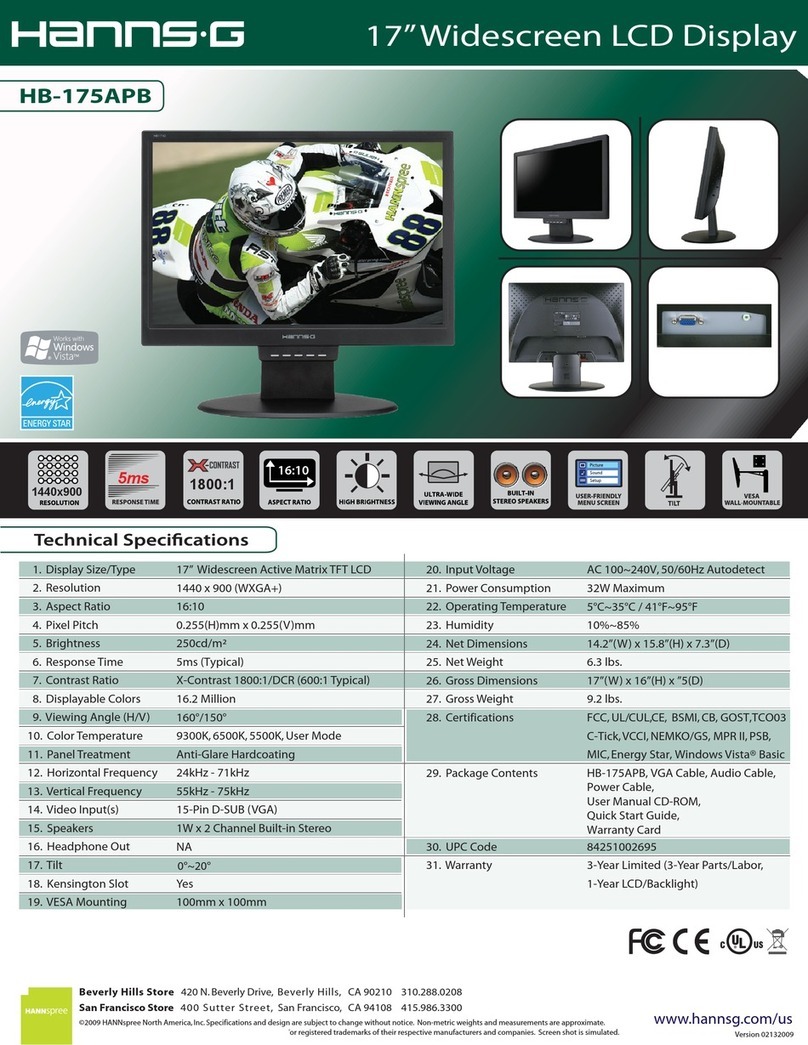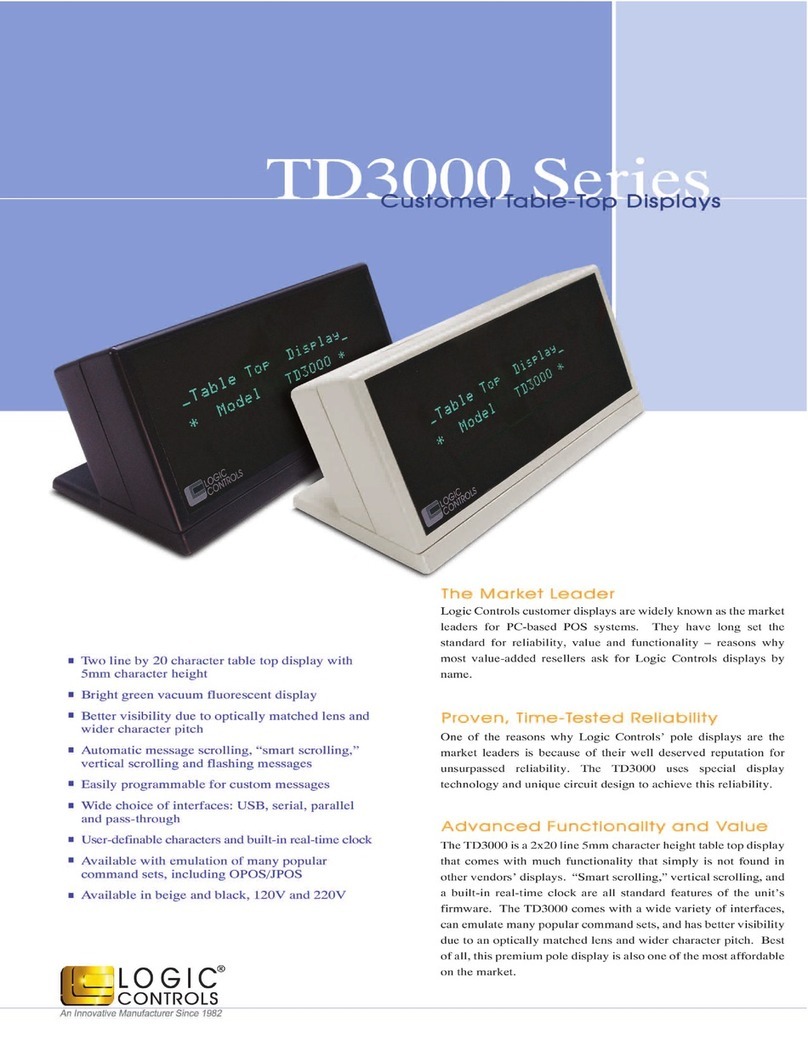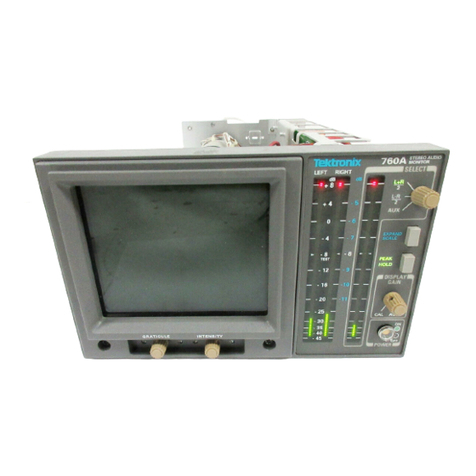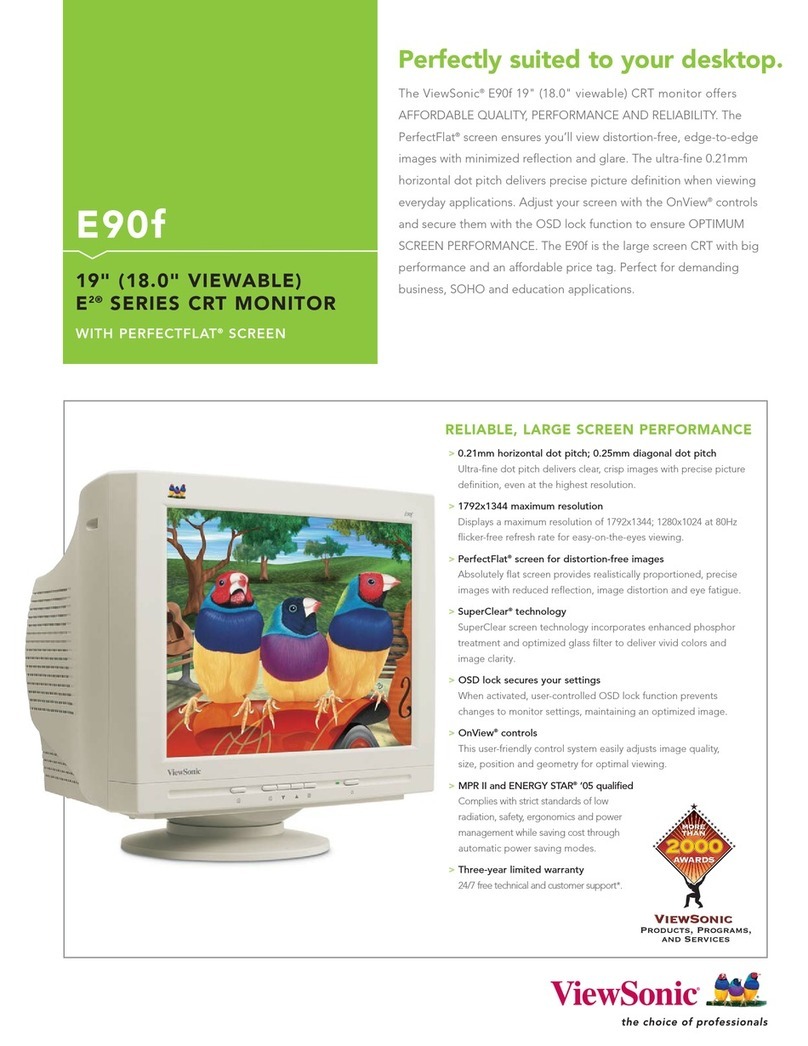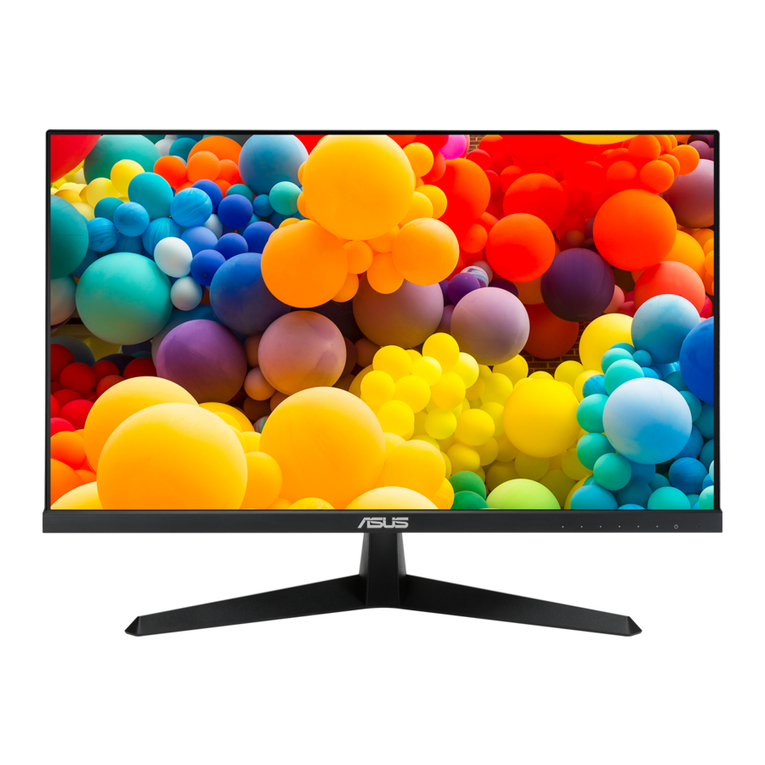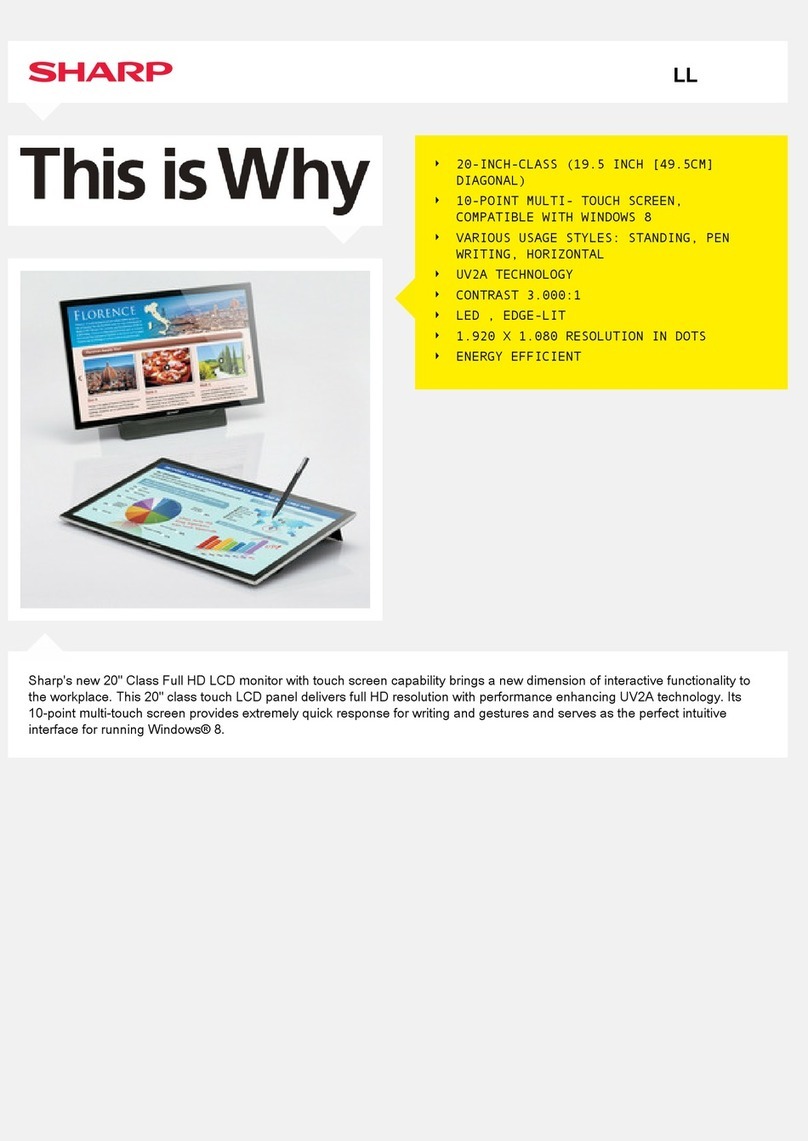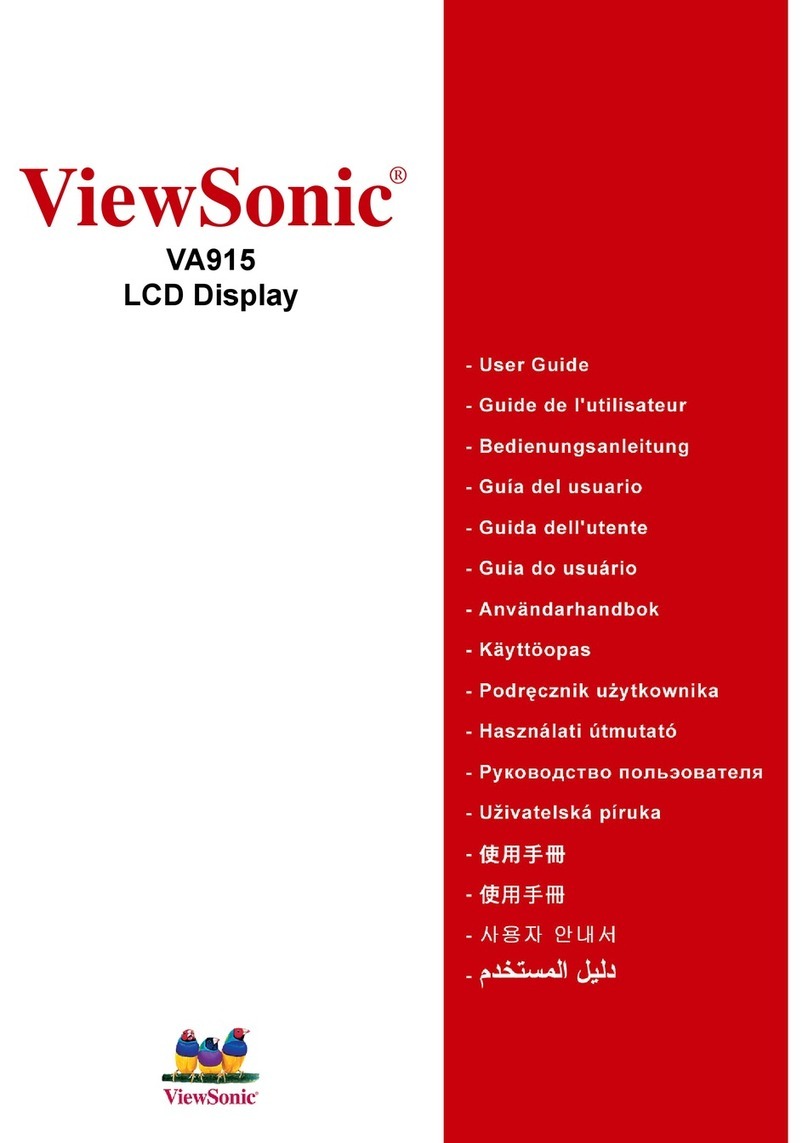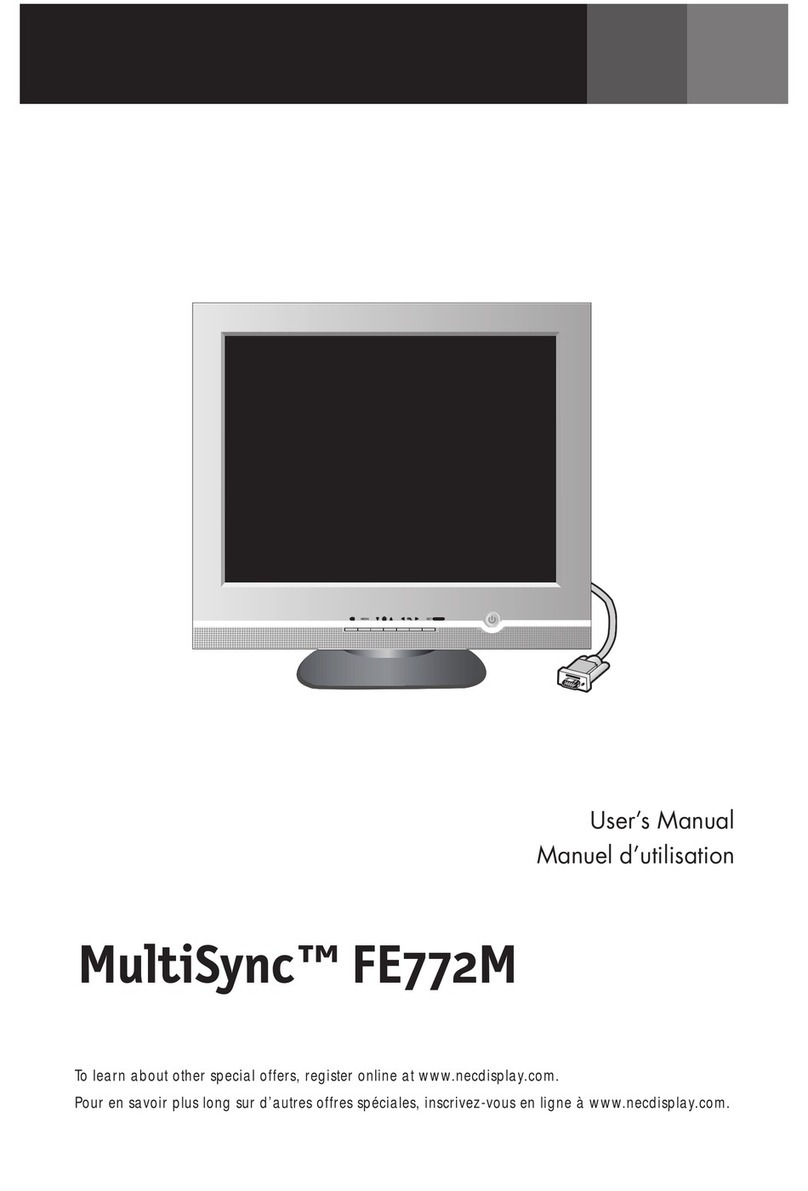delta-mobrey MSM400 User manual

Mobrey MSM400
Sludge Density Monitor
Reference Manual
IP258, Rev. C
Jan 2023
With a Standard Range 1 MHz / 3.3 MHz Ultrasonic Sensor


Reference Manual
IP258, Rev. C
Mobrey MSM400
Sludge Density Monitor
Title Page
Jan 2023
With a standard range 1 MHz / 3.3 MHz ultrasonic sensor
Read this manual before working with the product.
For personal and system safety, and for optimum product performance, make sure you
thoroughly understand the contents before installing, using, or maintaining this product.
For the latest customer support information, visit the Mobrey brand pages at
www.delta-mobrey.com, and click on the Mobrey Service or Product Support quick links.
The products described in this document are NOT designed for nuclear-qualified applications.
Using non-nuclear qualified products in applications that require nuclear-qualified hardware or
products may cause inaccurate readings.
For information on nuclear-qualified products, contact an Delta Mobrey Sales Representative.
Replacement equipment or spare parts not approved by Delta Mobrey for use as spare parts
could reduce the capabilities of the Mobrey MSM400, and may render the instrument
dangerous.
◼
Use spare parts supplied or sold by Delta Mobrey


Reference Manual
IP258, Rev. C
Table of Contents
Jan 2023
Table of Contents
TOC-i
Table of Contents
Section 1: Introduction
1.1
Safety messages ...................................................................... 1
1.2
Manual overview ......................................................................2
1.3
Customer support..................................................................... 2
1.4
Product recycling/disposal .......................................................... 2
Section 2: Overview
2.1
Safety messages ...................................................................... 3
2.2
The Mobrey MSM400 Sludge Density Monitor....................................... 4
2.2.1
Measurement principle ..................................................... 5
2.2.2
Sludge characteristics ...................................................... 5
2.2.3
Control unit features ........................................................ 6
2.2.4
Controller input ............................................................. 6
2.2.5
Control functionality........................................................ 6
2.3
Control unit functions ................................................................ 7
2.3.1
Standard functions .......................................................... 7
2.4
Control unit front panel.............................................................. 8
2.4.1
Keypad........................................................................ 8
2.4.2
Display ........................................................................ 9
Section 3: Installation
3.1
Safety messages .................................................................... 11
3.2
Before you install ................................................................... 12
3.2.1
Preliminary checks .........................................................12
3.2.2
General considerations ....................................................12
3.3
Mounting the Mobrey MSM400 control unit....................................... 13
3.4
Installing the gap sensors .......................................................... 14
3.4.1
Installation: Mobrey 433 tank mounted gap sensor......................... 14
3.4.2
Installation: Mobrey 448 pipe-section gap sensor .......................... 15
3.5
Electrical installation .............................................................. 17
3.5.1
Control unit electrical connections........................................... 17
3.5.2
Gap sensor connections and cabling.......................................... 19
3.5.3
Power connections .........................................................20
3.5.4
Earthing connections.......................................................21

Table of Contents
Jan 2023
Reference Manual
IP258, Rev. C
TOC-ii
Table of Contents
3.5.5
Relay connections ..........................................................22
3.5.6
Digital trigger input connections.............................................. 23
3.5.7
Current output and HART connections ....................................... 23
Section 4: Getting Started
4.1
Safety messages .................................................................... 31
4.2
Switching on the power ............................................................ 32
4.2.1
Switching on the Mobrey MSM400 .........................................32
4.3
The menu system ................................................................... 32
4.3.1
How to navigate the menu system ............................................ 32
4.3.2
How to change settings on parameter screens .............................. 35
4.4
Guidance to configuring the MSM400 ............................................. 38
4.4.1
Before starting to configure ................................................... 38
4.5
Initial setting-up .................................................................... 40
4.5.1
Operating modes ...........................................................40
4.5.2
PIN Security .................................................................40
4.5.3
System settings .............................................................41
4.5.4
Sensor input .................................................................42
4.6
Calibration .......................................................................... 43
4.6.1
AUTOCAL control unit calibration ............................................ 43
4.6.2
Manual entry control unit calibration ........................................ 47
4.7
Setup menu.......................................................................... 50
4.7.1
Primary Variable units .....................................................50
4.7.2
De-sludge function .........................................................50
4.7.3
Current Output .............................................................52
4.7.4
Relays........................................................................54
4.7.5
Alarms .......................................................................56
4.7.6
Faults ........................................................................57
4.7.7
Display .......................................................................58
4.8
Engineering.......................................................................... 60
4.8.1
Engineering Setup ..........................................................60
Section 5: Service and Health Checks
5.1
Safety messages .................................................................... 61
5.2
General troubleshooting........................................................... 62
5.2.1
Troubleshooting guide .....................................................62
5.2.2
Error messages..............................................................62

Reference Manual
IP258, Rev. C
Table of Contents
Jan 2023
Table of Contents
TOC-iii
5.2.3
Fault messages..............................................................62
5.2.4
Other messages .............................................................63
5.3
Servicing............................................................................. 63
5.4
Restoring the factory defaults .................................................... 64
5.4.1
Restore factory default settings .............................................. 64
5.5
Tests ................................................................................. 64
5.5.1
Simulation (auto cycle) ........................................................ 64
5.5.2
Display .......................................................................65
5.5.3
Set current ..................................................................65
5.5.4
Current output calibration..................................................... 65
5.5.5
Readings and results .......................................................66
5.5.6
Control unit diagnostics ...................................................68
5.5.7
Sensor diagnostics ..........................................................68
5.5.8
Fixed data ...................................................................69
Appendix A: Reference Data
A.1
Control unit specifications ........................................................ 71
A.1.1
General ......................................................................71
A.1.2
Display .......................................................................71
A.1.3
Electrical ....................................................................71
A.1.4
Mechanical ..................................................................72
A.1.5
Environment ................................................................73
A.2
433 sensor specification ........................................................... 74
A.2.1
General ......................................................................74
A.2.2
Connections .................................................................74
A.2.3
Environment ................................................................74
A.2.4
Approvals....................................................................74
A.3
448 sensor specification ........................................................... 75
A.3.1
General ......................................................................75
A.3.2
Connections .................................................................75
A.3.3
Environment ................................................................75
A.3.4
Approvals....................................................................75
A.4
Dimensional drawings .............................................................. 76
Appendix B: Product Certifications
B.1
Safety messages .................................................................... 77
B.2
Approved manufacturing location...................................................... 78

Table of Contents
Jan 2023
Reference Manual
IP258, Rev. C
TOC-iv
Table of Contents
B.3
European directive information .................................................. 78
B.4
Hazardous locations certification ...................................................... 79
B.4.1
Control unit approvals .....................................................79
B.4.2
Gap sensor approvals.......................................................79
B.4.3
Instructions for hazardous area installation................................. 80
Appendix C: Menu Maps and Parameters
C.1
Safety messages .................................................................... 83
C.2
Menu maps and parameters ....................................................... 83
Appendix D: Additional Features
D.2 Direct parameter access ........................................................... 91

Section 1: Introduction
1
Reference Manual
IP258, Rev. C
Section 1
Introduction
Section 1: Introduction
Jan 2023
Safety messages............................................................................ page 1
Manual overview ........................................................................... page 2
Customer support.......................................................................... page 2
Product recycling/disposal .....................................................................
page 2
1.1
Safety messages
Procedures and instructions in this manual may require special precautions to ensure the safety
of the personnel performing the operations. Information that raises potential safety issues is
indicated by a caution symbol (
). The external hot surface symbol ( ) is used when a surface
is hot and care must be taken to avoid possible burns. If there is a risk of an electrical shock the
(
) symbol is used. Refer to the safety messages listed at the beginning of each section before
performing an operation preceded by this symbol.
Failure to follow these installation guidelines could result in death or serious injury:
◼
The Mobrey MSM400 Sludge Density Monitor must be installed, connected,
commissioned, operated, and maintained by suitably qualified personnel only,
observing any national and local requirements that may apply
◼
Use the equipment only as specified in this manual. Failure to do so may impair the
protection provided by the equipment
Explosions could result in death or serious injury:
◼
Please review the approvals section of this reference manual for any restrictions
associated with an installation
Electrical shock could cause death or serious injury:
◼
If the control unit is installed in a high voltage environment and a fault condition or
installation error occurs, high voltage may be present on leads and terminals
◼
Use extreme caution when making contact with the leads and terminals
◼
Make sure that power to the control unit is off while making connections

2
Section 1: Introduction
Section 1: Introduction
Jan 2023
Reference Manual
IP258, Rev. C
1.2
Manual overview
This manual provides installation, configuration and maintenance information for the
Mobrey MSM400 with a standard range 1 MHz / 3.3 MHz ultrasonic sensor.
Section 2: Overview
Section 3: Installation
Section 4: Getting Started
Section 5: Service and Health Checks
Section A: Reference Data
Section B: Product Certifications
Section C: Menu Maps and Parameters
Section D: Additional Features
1.3
Customer support
For the latest customer support information, visit the Mobrey brand pages at
www.delta-mobrey.com, and click on the Mobrey Service or Product Support quick links.
Individuals who handle products exposed to a hazardous substance can avoid injury if they
are informed of, and understand, the hazard. If the product being returned was exposed to
a hazardous substance as defined by OSHA, a copy of the required Material Safety Data
Sheet (MSDS) for each hazardous substance identified must be included with the returned
goods.
1.4
Product recycling/disposal
Recycling of equipment and packaging should be taken into consideration. The product and
packaging should be disposed of in accordance with local and national legislation.

Reference Manual
IP258, Rev. C
Section 2: Overview
Jan 2023
Section 2: Overview
3
Section 2 Overview
Safety messages............................................................................ page 3
The Mobrey MSM400 Sludge Density Monitor ......................................... page 4
Control unit functions ...........................................................................
page 7
Control unit front panel .........................................................................
page 8
2.1
Safety messages
Procedures and instructions in this manual may require special precautions to ensure the safety
of the personnel performing the operations. Information that raises potential safety issues is
indicated by a caution symbol (
). The external hot surface symbol ( ) is used when a surface
is hot and care must be taken to avoid possible burns. If there is a risk of an electrical shock the
(
) symbol is used. Refer to the safety messages listed at the beginning of each section before
performing an operation preceded by this symbol.
Failure to follow these installation guidelines could result in death or serious injury:
◼
The Mobrey MSM400 Sludge Density Monitor must be installed, connected,
commissioned, operated, and maintained by suitably qualified personnel only,
observing any national and local requirements that may apply
◼
Use the equipment only as specified in this manual. Failure to do so may impair the
protection provided by the equipment
Explosions could result in death or serious injury:
◼
Please review the approvals section of this reference manual for any restrictions
associated with an installation
Electrical shock could cause death or serious injury:
◼
If the control unit is installed in a high voltage environment and a fault condition or
installation error occurs, high voltage may be present on leads and terminals
◼
Use extreme caution when making contact with the leads and terminals
◼
Make sure that power to the control unit is off while making connections

Section 2: Overview
Jan 2023
Reference Manual
IP258, Rev. C
4
Section 2: Overview
2.2
The Mobrey MSM400 Sludge Density Monitor
The Mobrey MSM400 is a wall-mounted control unit with a remote ultrasonic gap sensor, and
are used together as a versatile sludge monitoring system (Figure 2-1 on page 4).
The MSM400 operates with a Mobrey 448 gap sensor, that comes as a complete
pipe section
,
or a Mobrey 433 gap sensor suspended in an
open tank
. The sensors measure the suspended
solids concentration in the liquid (gap) between two opposite sensor faces.
The
percentage-by-weight of dry suspended solids
in the liquid is calculated by the control
unit, typically in the range 0.5 to 15%, and outputs a 4–20 mA or digital HART signal for a plant
control system to operate the sludge process.
Typical applications are to de-sludge a sewage settlement tank, or mineral processing to
maintain the percent solids of Kaolin (china clay) or similar, before the remaining process media
is moved on to further refiners.
Figure 2-1. Mobrey MSM400 Sludge Density Monitors with sensors
A.
Mobrey 433 Tank Mounted Sensor
B.
Mobrey 448 Pipe Section Sensor
C.
Mobrey MSM400 Control Unit
D.
Settlement Tank

Reference Manual
IP258, Rev. C
Section 2: Overview
Jan 2023
Section 2: Overview
5
2.2.1
Measurement principle
The technique used to measure suspended solids is
ultrasonic attenuation
.
When suspended solids pass between the
gap
in the opposing sensor faces, they scatter the
ultrasound (Figure 2-2). The signal loss is proportional to the percentage-by-weight of
suspended solids (%Solids).
To allow measurement over a wide range of %Solids, the attenuation can be measured at one of
two different frequencies.
Figure 2-2. Ultrasonic attenuation
Mobrey 433 Tank
Mounted Sensor
SIGNAL IN CLEAR LIQUID
Transmitter
Crystal
Receiver
Crystal
SIGNAL ATTENUATION
BY SUSPENDED SOLIDS
Transmitter
Crystal
Receiver
Crystal
Entrained Gas
Suspended Solid
2.2.2
Sludge characteristics
The relationship between the
ultrasonic attenuation
measurement and the
percentage of
solids
in a particular sludge type is dependent on the sludge particle density and their average
size distribution. This is known from experience of most sludge types, and expressed as the
ultrasonic attenuation in deciBels (dB) per mm gap between sensor faces, per one percent
suspended solids.
Figure 2-3. Ultrasonic attenuation versus suspended solids
The relationship between ultrasonic attenuation and
Ultrasonic
Attenuation
(dB)
Zero
Point
%Solids
suspended solids is shown graphically in Figure 2-3. It is
important to calibrate the unit’s
zero point
by setting
up the sensors in clean liquid (supernatant), and then
setting the
slope
of the straight line graph using either
past data or on-site samples.
In the Mobrey MSM400 control unit’s memory, there is
information about various sludge types to enable a
basic set-up. Adjustments to the set-up can be made
after on-site samples have been taken.

Section 2: Overview
Jan 2023
Reference Manual
IP258, Rev. C
6
Section 2: Overview

Reference Manual
IP258, Rev. C
Section 2: Overview
Jan 2023
Section 2: Overview
7
2.2.3
Control unit features
The MSM400 has a range of built-in display, control, and alarm functions. The menu-driven
programming is simple to use and allows full configuration of the unit using the integrated
membrane keypad. Sensor and electrical connections are in a separated terminal housing.
Features summary
◼
Tough weatherproof wall mount enclosure for internal/external mounting
◼
Intrinsically Safe for connection to certified ultrasonic gap sensors
◼
Three-line LCD display with back light (for text and graphics).
Clear local display of the calculated value
◼
Two voltage-free SPDT (Single-Pole-Double-Throw) relay outputs
◼
Keypad and intuitive menu system for local programming
◼
Digital trigger input IN1
◼
Isolated Current Output for the digital HART signal
Note
◼
A full specification for the control unit is in Appendix A: Reference Data
2.2.4
Controller input
The MSM400 uses ultrasonic gap sensors to measure the ultrasonic attenuation, and calculate
the percentage of solids in the liquid.
Note
◼
The Mobrey MSM400 is designed for
non-hazardous (safe) area
installation,
but can be connected to a certified sensor installed in a hazardous area.
See Appendix B: Product Certifications for the product certifications.
2.2.5
Control functionality
Control functionality is provided by two single-pole-change-over (SPCO) voltage-free contact
relays in the control unit. The two relay outputs are fully field adjustable to perform a wide
variety of control, fault indication, or alarm duties.
For applications where the control unit functionality is linked to other external events, there is a
digital trigger input for accepting contact closure signals.
The Isolated Current Output provides a digital HART signal and is driven by the calculated the
Primary Variable (PV)
, which is typically the calculated percentage-by-weight of suspended
solids (% Solids) in the liquid.
A typical application (Figure 2-4 on page 7) would include the 448 pipe-section sensor mounted
in a discharge pipeline from a refiner or settlement tank, and optionally a 433 tank-mounted
sensor suspended in the sludge blanket.
The relay output in the MSM400 can be used to stop the de-sludge cycle when the liquid runs
clear, switching at typically a few percent suspended solids.

Section 2: Overview
Jan 2023
Reference Manual
IP258, Rev. C
8
Section 2: Overview
Figure 2-4. Typical application
A
Attenuation
Signal
HART
Signal
A
B
Relay
RL1
D Attenuation C
Signal
A.
Mobrey MSM400 Control Unit
C. Mobrey 448 Pipe Section Sensor
B.
Mobrey 433 Tank Mounted Sensor
D. Discharge Pipeline
2.3
Control unit functions
Note
◼
For a full guide to programming the MSM400, see Section 4: Getting Started.
2.3.1
Standard functions
When connected to either Mobrey 433 ultrasonic gap sensor (tank-mounted), or a Mobrey 448
ultrasonic gap sensor (pipe-mounted):
◼
Calculation and display of percentage by weight of suspended solids
–
this can be re-scaled to other density measurement units.
◼
Output a 0/4–20 mA and HART signal
–
The Current Output is usually proportional to the Primary Variable (PV), and is
displayed in bargraph form (indicating 0 to 100% of output current).
◼
Relay control functions
–
Relay RL1 operates at chosen values in density units.
–
Relay RL2 is a fault relay by default, which may be assigned to control duty if required.
◼
The MSM400 can be set-up to perform standard, water-industry de-sludging control.
◼
Voltage-free (digital) contact close input IN1
–
this may be used to enhance the de-sludging function.

Reference Manual
IP258, Rev. C
Section 2: Overview
Jan 2023
Section 2: Overview
9
2.4
Control unit front panel
This section describes the front panel fascia, which has an integral keypad and display.
Note
◼
A full specification for the control unit is in Appendix A: Reference Data.
Figure 2-5. Front panel fascia
A
B
A.
Three-line Back-lit LCD Display
B.
Keypad
2.4.1
Keypad
The membrane keypad has six function buttons. They are used for navigating a menu system,
and for viewing / editing application parameters. Table 2-1 summarizes each button function.
Table 2-1. Keypad function buttons
Button
What the button will do
When the Full Primary Display (PV, bargraph, etc.) is shown, press the
red (ENTER)
button
to access the Menu System. At other times, this button is for selecting a menu option and for
confirming a changed parameter setting.
When navigating the menu system, the
UP-ARROW
button is for moving upwards one line.
At other times, this button is for scrolling up through a list of alphanumeric characters or a
multiple-choice list of options.
When navigating the menu system, the DOWN-ARROW button is for moving downwards
one line. At other times, this button is for scrolling down through a list of alphanumeric
characters or a multiple-choice list of options.
The
LEFT-ARROW
button is for moving left e.g. to another character when changing a
parameter value.
The
RIGHT-ARROW
button is for moving right e.g. to another character when changing a
parameter value.
When navigating the menu system, use the
Esc (Escape)
button to return to a previous
menu level and the Primary Display. At other times, e.g. while changing a parameter setting,
the button is for restoring a parameter setting before the editing was started.

Section 2: Overview
Jan 2023
Reference Manual
IP258, Rev. C
10
Section 2: Overview
4.35%
2.4.2
Display
Full Primary Display
The LCD display shows text and graphics. After the power-up and self-checks are completed,
the Full Primary Display is presented.
The default Full Primary Display features a digital clock, Primary Value (% Solids) with display
units, bargraph representation of output current, and status icons.
Figure 2-6. Typical Display Of The MSM400
E
B
C
D
RL1
RL2
A.
Off-line/On-line Status (Locked Padlock = On-line) D. Relay (RL) Status: o = De-energized;
= Energized
B.
Digital Input Status: o = De-energized,
= Energized A = Alarm mode and Energized
C.
Bargraph Of 4–20 mA Output
E. Primary Value (PV) (% Solids)
Large PV Display
After a period of keypad inactivity within the menu system, the display automatically changes to
the
Large PV Display
. This shows only the Primary Value (PV) and Display units, but in a larger
character size to facilitate easier viewing.
To restore the
Full Primary Display
, press any button.
Note
◼
The Large PV Display feature can be switched off using parameter P574.
See “Display” on page 58.
◼
The bargraph flashes when the Primary Value (PV) is zero.
Figure 2-7. Large PV Display and Full Primary Display
Large PV Display
Full Primary Display
4.35%

Reference Manual
IP258, Rev. C
Section 2: Overview
Jan 2023
Section 2: Overview
11

Table of contents
